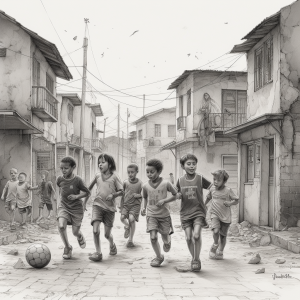Before you start your journey into the soccer world you must be aware of the physical requirements. Soccer requires a high level of physical fitness. Don’t underestimate the levels of fitness that are required for soccer. Players at the highest level can run up to 15 km’s per game. The running involved is not a leisurely jog but involves frequent sprints that require acceleration, deceleration, change in direction and vertical leaps.
Fitness is required at all levels of the world game. But if you want to succeed at the highest levels then fitness and the associated pain that comes with getting conditioned is a must. At a junior level, fitness will improve both their effectiveness and enjoyment. The objective of fitness in Soccer is to allow the players to cope with the physical demands of the game while allowing each player to harness and improve their technical and tactical abilities.
So how do we define fitness? What is soccer fitness? For starters, Physical fitness is a general state of being physically active on a regular basis to maintain good physical condition. If you look at fitness through the eyes of biologists, then fitness is defined as an individual’s ability to propagate its genes. Anyone remember Charles Darwin’s theory of Survival of the Fittest.
A generic and basic definition of Fitness is the functioning of the heart, blood vessels, lungs and muscles at optimum efficiency. Soccer fitness can also be broken down even further into 5 categories. The categories are aerobic fitness, muscular strength, muscular endurance, flexibility and body composition.
Soccer fitness as mentioned above is based on the attributes an individual has (genes) and the ones he has acquired through training (conditioning). Using the above definitions we can safely assume that soccer performance is influenced by inherited genetics and the quantity and magnitude of training. Don’t let this fool you; even the most naturally gifted player will still need adequate conditioning. Both components of soccer performance go hand in hand.
Never forget that different sports require different levels of fitness and various components of conditioning.
- Soccer players must be able to compete and perform for 90 minutes.
- They require prolonged strength that will last for the entire match and we refer to this as endurance.
- Must have explosive strength to have the ability to sprint and change direction.
- Must have strong and developed legs to produce force that will enable them to pass, shoot and tackle.
- Last but not least, good levels of agility and co-ordination which comes from having a lean body composition.
During a game, the intensity and the fitness requirements vary considerably. From sprinting down the wings chasing a through ball, to jogging back to your position and to standing waiting for the opposition to take a throw in or corner. So when we train for soccer fitness we must try and replicate the demands of a soccer match. Training should always involve the use of balls to develop and condition the muscles used during a match. This will condition the players and will also improve their technical and tactical skills while keeping them interested and entertained all at the same time.
So far we have defined fitness and all the components of conditioning needed for soccer. So how do we achieve soccer fitness? How do we become a soccer immortal?
Repetition– Most professional soccer players train twice a day, 5 times a week. In order to gain, improve or maintain soccer fitness you must train.
“Practice makes perfect”
To become a great soccer player you must train and condition your body more than your competitors or opponents. Simple as that. If you want immortality you need to train frequently and grace the training fields as if they were battlefields.
Intensity– Don’t go through the motions.
“No pain, no gain.”
Warning- too much high intensity training will lead to injury and fatigue. Train hard, but use common sense as well.
Resistance-Progressive Overload
“Learn to walk before you run”
Training sessions should be designed to stress the player’s physiological mechanisms enough to cause the body to adopt and improve. Gradually increase the workload of your training sessions to increase the player’s aerobic and anaerobic capacities.
Specific Training
Training sessions must be specific to your sport. Design training session for soccer not for marathons. During pre-season add balls to the training program. Also divide players into groups based on their playing position and train these groups separately. A Stopper or centre back doesn’t require the levels of fitness a wing back needs. A wing back doesn’t need the levels of strength a stopper does. Get the picture?
“He who runs in circles never gets far”.
Recovery
Training provides the platform and stimulus for increased performance but it’s during the recovery when the bodies’ physiological mechanisms for improvement are implemented and gained.
“It is a sublime thing to suffer and become stronger”.
Warning- A long break or too greater recovery periods will lead to the benefits being lost and too short periods of recovery will lead to overtraining, fatigue and injuries. Find the right balance.
To summarize this post,
1. Soccer performance can be improved by fitness training and conditioning.
2. Components of fitness can be divided up into aerobic, anaerobic and specific muscle training.
3. Genetic background plays a part in your overall performance but it requires training and conditioning.
4. Improvements in fitness depend on training methods and need to be specific.
5. Frequency, intensity, resistance-progressive overload and recovery all play a significant role in Soccer fitness and performance.
I’ll finish up with one more quote,
“I don’t believe in burnout. I believe in losing your appetite”.
If you’re a soccer player or soccer parent put your hand up. Keep your hand up if your coach provides the training required to develop soccer fitness and conditioning. If your hand is still up, congratulations. You have a solid coach that understands the basic requirements of soccer fitness. IF you’ve lowered your hand then you must reassess your position as a player and/or soccer parent. The choice is yours. You can stay with a coach that in my mind is completely useless, or you can change teams and coaches and give yourself or your child every chance to succeed. People will argue that the coach is not the best but he’s a lovely person. When I hear parents evaluate a coach this way it makes me sick.
“If he’s a lovely person invite him to your BBQ’s and let him socialize with you. The whole idea of going to soccer training is to learn the basic principles of soccer. You owe it to your kids. Just because someone has the title of soccer coach, doesn’t necessarily mean his a soccer coach.”
Next time you’re at training, have a hard look at the coach. Maybe it’s not your kids or you that aren’t good enough.



I really liked this post. Can I copy it to my site? Thank you in advance.
Gday Andrew, you can use the post on your site but you must leave it original. You must also give reference to my site with a few backlinks. Thanks for your feedback.